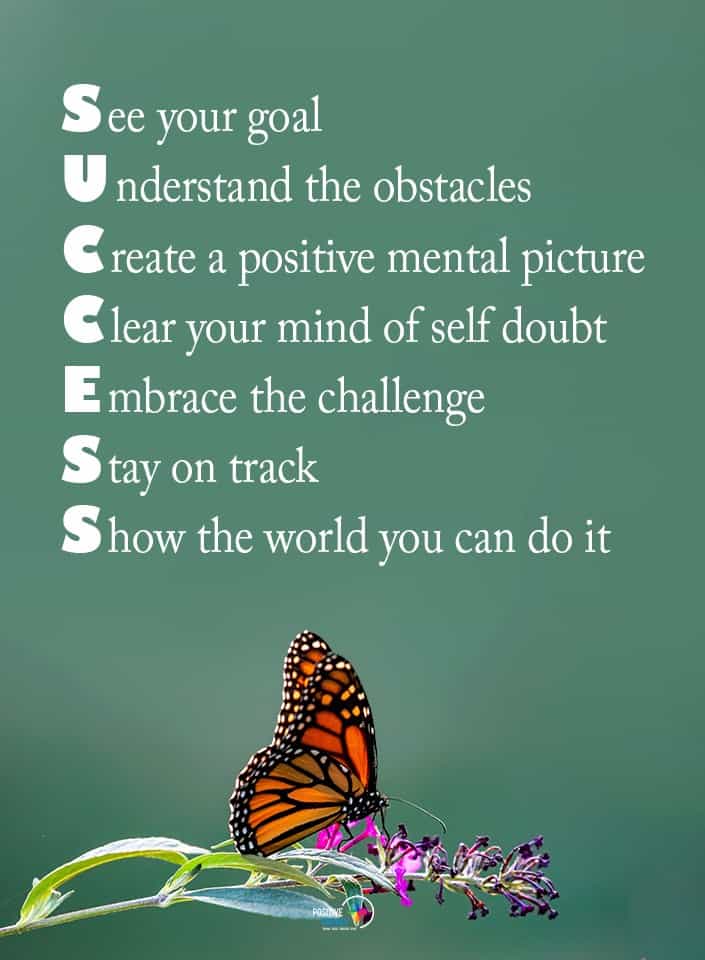The subconscious mind refers to the parts of the brain that you’re not fully aware of but hold thoughts, feelings, and ideas that influence your conscious mind and subsequent actions. It’s a confusing part of the brain as you may not even realize how much it affects your behavior, and trying to understand it can be a challenging quest.
But when you begin to grasp the subconscious concept, you’ll also be able to use that part of your brain to overcome struggles in your conscious life. After all, if it can affect you negatively, indeed, it can also affect you positively! But how can you use that for good? Here are five ways your subconscious mind can help you overcome negative thoughts.
1. You Can Teach Your Subconscious Mind Positive Self-Talk
Positive self-talk is a crucial feature in someone with good well-being. When you begin making the voice you use with yourself into a powerfully positive and kind one, your subconscious begins to take on that same voice.
When you have many negative thoughts, you likely also have a negative way of thinking about yourself, and your subconscious picks up on that. It takes notes and remembers those toxic things you feel about your abilities, appearance, and self-worth with every word you say.
This is why teaching positive self-talk to your subconscious mind can be a powerful tool for fighting the negativity of your mind. Fighting these destructive thoughts and filling the gaps with cheer and optimism will teach your brain to rewire how it thinks. Here are some techniques to try out.
 · Fight Negativity With Positivity
· Fight Negativity With Positivity
Whenever you think of something negative, counter it with something positive, even if you end up jumping to the other extreme of the spectrum.
For example, if you think, “I’m going to make a fool of myself at this party,” respond with “No! I’m going to make tons of new friends and have a great time!”. Or, if you think, “I’m going to mess up this project and lose my job,” respond with “No! I’m going to do my very best and impress my boss with my achievement!”.
· Use Real-World Examples
A lot of the time, the negative thoughts you experience are not, in any way, a reflection of reality. You might have the worst ideas about an upcoming event, and then after that, realize it wasn’t so bad, and you’re okay with how it turned out. Collect these examples of times where things went well for you and, the next time you start dealing with negativity, remind yourself of those times. Grounding yourself in a firm, evidenced realism can be a helpful way to combat negativity.
· “Delete” Negative Thoughts
This does not mean that you should repress negative emotions or thoughts. Instead, it means learning to detect ideas that do not serve you and genuinely are of no help to you. When these types of negative impulsive beliefs begin to plague your mind, imagine yourself pressing a delete button in your head to get rid of it. If you need stronger visualization, you can write down the negative thought, rip it up, and throw it away.
2. You Can Listen To It And Get In Touch With You
Your subconscious mind’s negativity can be challenging to deal with, but sometimes you can find helpful knowledge within them. Listening to your subconscious doesn’t mean believing everything it says. Instead, it means being a patient observer to the thoughts that float around.
This is a positive way of interacting with your subconscious because it gets you in touch with more profound thoughts, issues, and emotions that may be hiding beneath the surface, out of sight. You’ll learn more about yourself and become stronger for it, and it’s a beautiful way to use your subconscious mind. Here are some ways to do so:
· Interview Your Subconscious Mind
Negative thoughts have to come from somewhere. Some underlying issues and roots prevent them from being resolved until you dig them out. Take the time to seek these roots by paying close attention to your subconscious and asking what it fears, dislikes, and is trying to protect. The information you gain from such interviews can further learn what steps you can take to overcome underlying issues and problems.
· Consider Its Wisdom
Is your subconscious resisting you or specific events? Why is it doing so? Sometimes you need to trust that this resistance is trying to tell you something. When you feel that resistance, stop and listen and perform another interview. What is your subconscious telling you?
· Promise To Do What You Can
Commit to the act of making things work and looking out for your subconscious. Tell your subconscious that you’ve heard its messages and promise to do right by it. You’ve heard its fears and worries, and you are examining their causes and what they say about you. You’ll take it from here, and you will protect your subconscious. This can help your positive thinking by abating the fears of your subconscious, showing it that things are and will be okay.
3. You Can Give It Things To Desire
This doesn’t mean giving in to impulses or attaching value to random things. Instead, it entails giving your subconscious things to burn for. It will naturally act on the things you desire and can be powered to overcome negativity by gunning for those burning passions.
Think, for example, of athletes and successful individuals. Their burning desire makes them go above and beyond and allows them to feel that any sacrifices they have to make are 100% worth it. Their subconscious selves are already acutely tuned into those fiery passions, making them focus on positive progress instead of hurdles and negativity.
This doesn’t mean you should become obsessed with success, however. It means that you should give your subconscious something to zoom in on to help it overcome negativity. When passion becomes your driving force, you’re more likely to focus on progress than struggles. Here are some ways to cultivate burning desire:
 · Find Motivation
· Find Motivation
Motivation doesn’t sustain itself forever, but you can replenish it by finding things that inspire you. For the most part, you’ll have to rely on a commitment to keep moving forward. Still, now and then, you can reignite the fire in your desire by watching motivational videos, reading about inspirational people, and visualizing your future success.
· Track Progress Closely
When you’re not carefully observing your improvement, it’s easy to overlook it. Most progress consists of tiny little separated “wins,” not substantial apparent changes. But it’s easy to get discouraged if you’re not paying attention to the little ways you’re improving. As you work towards your goals, track every step of your progress as you go, and when you see that you are always getting better – even with dips in the path – your desire will build.
· Burn Bridges
Burning bridges can force your subconscious to stay on track with your burning desires. What does burning bridges mean in this content? It means cutting off “safety nets.” These safety nets are often counterproductive, as they make you feel like you should hang back until they’re more secure or like you can go anytime. Cut them off, and your subconscious will kick into overdrive because the only way to keep on the journey is to rush forward.
4. You Can Keep Reminding Your Subconscious Mind
When you’re aiming to make your subconscious mind more assertive and more positive, reminding it of what you’re trying to teach is a great way to help that progress. Repetition can provide your subconscious with repeated input to program it to fight negative thoughts, emotions, and rumination.
In some cases, this kind of repetition is a positive self-affirmation, which is the use of repeating mantras to manifest beliefs in your subconscious and bring them to life in the real world. But the subconscious doesn’t even need direct affirmations – just reminders of the validity of positive notions and your promises against negative thoughts. For example, you may say things like:
- I can figure out any situation and problem.
- I can overcome anything and everything.
- I’m clear-headed and think positive thoughts.
- My dreams are within the zone of my growth.
- Other people’s expectations of me do not define me.
- Breaks and rests are good for me.
When you repeat these reminders to yourself, again and again, you’re training your subconscious to believe in them. Even if you’re not 100% convinced in your own words at first, positive thinking will grow and develop as your subconscious internalizes them and uses them against negative thoughts.
5. You Can Teach It To Visualize
Some people underestimate the positive power of visualization. After all, it’s just imagining things. So how can it be effective? Well, studies have found that the act of practicing something mentally can be almost as effective as any form of actual physical practice. This is why visualization works – it can be as usable as a concept as actually being somewhere and doing something.
This isn’t to say that you should ditch practical efforts and lounge around imagining things all day, of course. Instead, use visualization to create positive thinking, imagine goals, and recall personal capabilities. This will kick your subconscious mind into gear, tricking it into thinking that you’re physically doing these things. Its confidence and faith will build over time, squashing negative thoughts.
When you visualize things, try to create a vivid and detailed image as possible, covering even tiny details that aren’t important or don’t matter much. The more authentic a visualization seems, the better it is for your efforts to overcome negative thoughts with your subconscious mind.
 Final Thoughts On Some Ways Your Subconscious Mind Can Help You Overcome Negative Thoughts
Final Thoughts On Some Ways Your Subconscious Mind Can Help You Overcome Negative Thoughts
Negative thoughts plague many people, and you’re not alone if you struggle with them. It sounds a little far-fetched the think that you can turn the tables on your subconscious and find ways to use it for good, but it’s true, and it’s a powerful way to take your mind into your own hands. By learning to use your subconscious mind and program it to fight negative thoughts, you’ll be able to enjoy an improved outlook on life.


















